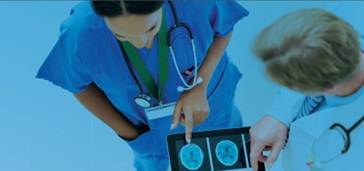
Posts About

6 Priorities for Healthcare CIOs
Every industry has its own trends that IT executives must face. But few have to accommodate the sheer number of complex issues as the healthcare industry.
Read MoreSelling Your CFO on Diverse Carriers
In today’s connected world, real-time access to information is often critical to the success of an organization. A wise technology organization will mitigate risks of telecommunication outages by introducing a diverse data carrier. But sometimes technology leaders who understand the need for implementing diverse carriers are unable to sell their CFO or budget committee on approving the funds to mitigate the risks of network downtime.
Read More
Supporting Meaningful Use With Robust Data Networks
Healthcare providers are under constant pressure to improve care while making operations more efficient and cost-effective. Spurred in part by the American Recovery and Reinvestment Act of 2009, they are turning to information technology to enhance services, improve productivity, and be more efficient.
Read MoreHow Data Mobility Can Help with Infection Control
The digitization of health and medical data holds great promise in battling against an epidemic, but the key to success lies in the ability to get the right information to the right people at the right time.
Read More
Patient Portals: Expanding Care and Support
Patient portals – secure online websites that give patients convenient, 24-hour access to personal health information from anywhere over an Internet connection – are a fast-growing trend.
Read More
Telesurgery: Extending Surgeons’ Reach
Telemedicine leverages modern communications technologies to enable physicians to conduct examinations from a distance, bringing the expertise of trained personnel and specialists to patients to locations beyond their physical location.
Read More
Data Mobility has Promise, but what are the Challenges?
As healthcare organizations increasingly adopt mobile technologies, they face real challenges related to security, connectivity, and scalability. The addition of mobile devices to an organization’s technology infrastructure means increased vulnerabilities.
Read More
Consumer Wearables: Creating a New Class of Health Data
Mobile technology is being leveraged to help improve the way healthcare is administered and to help patients take charge of their wellness.
Read More
Healthcare Informatics: Improving Healthcare and Decision Support
Electronic health records (EHRs) enable medical staff and healthcare professionals to reduce the number of medical errors and increase patient safety.
Read More
EHRs and PACS: Health Records Go Digital
Healthcare providers are under constant pressure to improve care while making operations more efficient and cost-effective. Today’s strained healthcare system presents a variety of challenges for healthcare providers.
Read More
Mobile Technology: Changing the Way Care is Administered
From anywhere/anytime access to care and closer, more customized provider/patient relationships, to better time management, there are many examples of ways in which mobile technology has changed how healthcare is administered.
Read More
Enabling Better Patient Care through Mobility
While we were at this year’s HIMSS conference, we spoke to a number of healthcare IT professionals at six leading healthcare providers to get their insights on how advancements in data mobility can engage the entire healthcare ecosystem and help improve patient outcomes.
Read MoreTelemedicine and Ethernet: A Healthy Combination
Telemedicine can vastly improve healthcare in many ways. It can break barriers of distance, for example in rural areas where quality routine and emergency care may be hard to reach.
Read MoreData Security and Reliability for Health Information Exchanges
Health information exchanges (HIEs) are an important development in transforming healthcare by enabling clinicians, administrators, and payers to share electronic patient information. When care providers can access all of a patient’s information at the point of care – including test results, current medications, allergies, and previous history – better treatment decisions can be made, resulting in lower costs and improved outcomes.
Read MoreLearn how Comcast Business can help
keep you ready for what's next.

